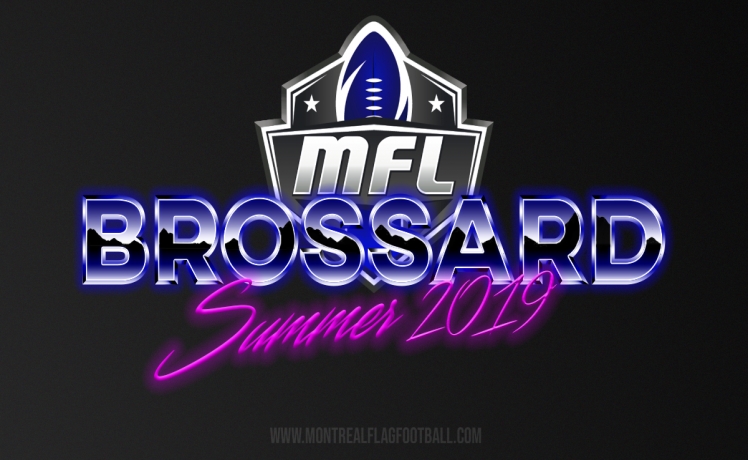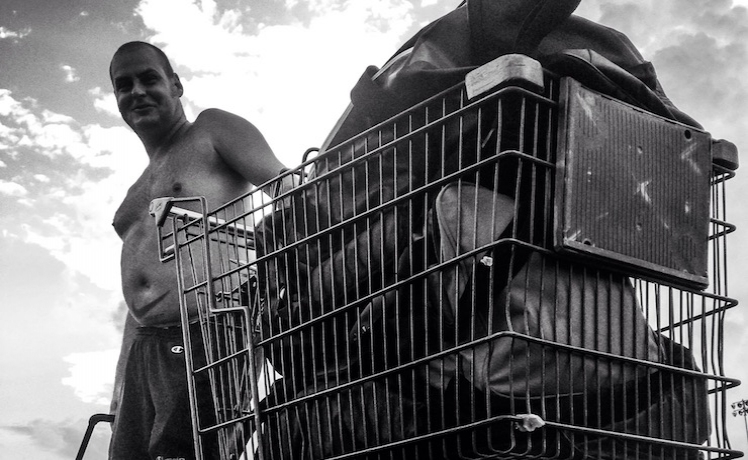Here we are again at the start of another wonderful season. This season Division 1 looks a lot more like a real division unlike last spring which saw only 5 teams enter. I’m hoping that it will be more competitive than last fall. We have a few new teams taking the plunge to try and play with the big boys. Last year my first article broke down every team roster, but this year I want to talk about additions and subtractions from teams and how I feel it will impact the season.
Les Gros Coqs
From the looks of their roster not much has changed and really why should it? They went 4-6 last season and won it all. There is one thing I did notice and that was that Dom is not listed on the roster but I’m sure that is just a computer error or oversight by the guy running the site (Jon) (ed’s note: it was an error and Dom is once again the Gros Coq QB). One thing that makes it unfair for the rest of the league is the addition of Walter Lefort (ed’s note: I put the wrong Lefort on the roster!). I know that the team looks up to him for leadership and guidance. He can also play. This addition might not look like much on paper but it will pay huge for them as they try and repeat. This is one team that has a chance to win week in and week out.
Outlaws
Steve has made a few roster changes over the winter though whether it pays off is another story. This season he lost Antoine and Mathieu from the roster and added Adam and Andrew. Both the losses are not that big of a deal even though both were decent players, but attendance was an issue for them plus a few bone head plays from time to time. Both Adam and Andrew are upgrades over what they lost. I have had both on my team before and both are solid, but again attendance will play a factor into how much they affect the team overall. Steve and his team will compete and I hope that all his recruiting helps get them back to the finals.
Bitter Boys
This is a team that has stayed the same over the years and has taken the jump from division 2 to 1 where some people think they should have been all along. I have to sort of agree with that, but I also understand from their point of view. They were a new team learning flag with a little bit of seasoning to them. Now after watching them grow as a team they should be up here with the rest of the top dogs. I still remember playing these guys in their first ever game and thinking to myself that they are garbage, but once they figured it out it only took 2 seasons to go from no good to be a very good team. I can’t see them winning it all this season, but I can see them giving a few teams a really hard time. So this season there will be more sour grapes (ed’s note: I guarantee Kevin has misused this saying) from these guys.
La Revolucion
I wasn’t sure if they would be coming back to division 1 this season after the losses that they had. Ben, their QB, split from the team during the winter season. I’m not exactly sure why, but I will use my investigation skills to find out. They also lost their top players in JC and Ted (MFL #10 top players). I wasn’t sure how this team was going to handle those losses, but Raph was able to pull a few guys that he has played with in FPF to come join him. Michael, Massil, Brendan, and Justin I know 3 of the 4 and they are solid guys (ed’s note: Massil is also a very solid player). The thing that I see about this roster is that it is missing a true QB. I know Raph has played it in the past and played it well, but that was a few seasons ago. This team will live and die by the arm of Raph; if he plays well and doesn’t turn it over they have a chance, but if it’s like it was in Division 2 last season it’s going to be long and hard to watch. Raph I’m pulling for you to finally win a title and walk off into the sunset. (ed’s note: this is the reason we keep letting the Trollers win, we’re hoping Kevin walks off into the sunset)
Team Evans (come up with a better name) (ed’s note: literally impossible)
This is a completely new team of guys thrown together by Jon to make division 1 better than the fall season. We know all these guys and everyone on this team is going to miss at least 1 game for sure, it’s just their MO. I’m not sure if Jon or Kris will be throwing this season my bet would be Jon. So their games are going to be slow with long drives down the field. I see Carmelo is back, but for how long? I hope the back is better and you make it the whole season. This will be a very interesting team to watch. They have players that can all play and it will come down to how well they can all play together. That will be the difference between winning and losing.
4Simba
New team with no roster so it’s all up in the air for these guys. Maybe they didn’t submit a roster as a way of hiding who they are so that it’s a mystery or is it that they are still forming a roster. Week 1 is only a few days away. Guess we need to wait and see who shows up on Saturday.
KOLB
These guys are back after taking last fall season off. It seems as if they only play in the spring season when the weather is nicer. Come on guys, football is a fall sport that’s supposed to be played in the elements, rain, and cold. They only have 7 on the roster right now and it looks to be the same as it was the last few seasons they played. They have probably learned a thing or two since playing their first game. These guys were a decent team in the past and they do play hard. They also beat the Trollers their first season to make it to the finals. I’m sure these guys will be fine, they will just need to play at their top level if they want any shot at the championship.
Trollers
As you can see I saved the best for last (ed’s note: no, you already mentioned my team), no I figured that everyone knows about them and no one would read this far so now I can talk about the losses and the gains that we took over the off season. So last year our roster was 7 players only and we all came back. We did have 1 very big loss though and that is the title. We were the back to back champs coming into last season and the weather took that away from us (ed’s note: nice excuse!). So this season we are hungrier to get it back. We did something that I’m not too cool with and that is player poaching. During the winter somehow we were able to steal the best player from one of the weaker teams to make us stronger and them weaker. When I was asked about this I was under the impression that the other team wasn’t coming back, but that didn’t happen and they came back. Just so you all know who I’m talking about it’s JC from Revolucion. Don’t get me wrong JC is a great player and it makes the Trollers that much stronger, but it’s not a cool move in my books. The Trollers will be battling it out for another title when playoffs are here, it’s just what they do.
Week 1 and figured it was a going to be hard to choose a game of the week but I decided to go with 2 games that really piqued my interest after the team write up part.
Most questions that need to be answered
Team Evans vs Revolucion
This is one game that I want to see because I need to get some answers about them.
Who is QBing for each team? (ed’s note: haha…)
How will Team Evans gel as a team?
How the new additions to Revolucion fit with the team?
Who takes charge of the defense for both sides?
I also think that this could be a good test for both teams. Hopefully I get to see this one first hand so I can get the answers.
GOTW
Gros Coqs vs Trollers
I went with this game because it is a rematch of last years playoff game in that great weather we had. Last season it all lined up for Les Gros Coqs to beat the Trollers. Dom is the best runner in the league it isn’t even close. With better weather means less slipping and sliding and better tackling.
QB- Max is a better thrower than Dom is, but Dom makes so many more guys miss and keeps so many plays alive. It makes my decision a tough one. To be honest if I had to start a team from scratch I think I would have to with Dom just because of the running. Advantage Gros Coqs
WR- Gros Coqs are solid from top to bottom as receivers. It will come down to stopping Bresse deep and Vincent short (ed’s note: Vince is out for the first two weeks, hope he’s reading from Italy!). The Trollers are stacked with speed: Ben, Andre, and JC (ed’s note: and Kevin, of course!) are some of the fastest guys out there so the underneath should get exploited by Josh, Cano, and Kevin along with Lesniak eating up the middle of the field. If Max can spread it around then Trollers should have the best WR group in the league. Advantage Trollers
Defense- This can go either way, both teams have played together for years now and have it dialed in. Each team has a great rusher in Tommy and Andre. I feel when Tommy is on his game he doesn’t only get sacks, but he also bats the ball down. On the back end, these teams will get some picks and take them back to the house. I will give the advantage to the Trollers on this one because I think they have figured out how to stop Les Gros Coqs.
Predictions
Last season I did fairly well in this area hoping for the same this season, but I’m also hoping that there are a lot tougher games to choose from. Here we go week 1 predictions. Predictions in bold.
Gros Coqs vs Trollers (ed’s note: Trollers because the Coqs are missing players)
4Simba vs Bitter Boys
Team Evans vs Revolucion
KOLB vs Outlaws
Power Rankings
Before writing this was thinking if I should rank every team 1-8 or only the top 3 like last season. I figured I’d have a little fun with it and rank all 8 this way you can see how I feel about your team prior to week 1 being played and to get some of you guys motivated. Some teams will be happy about where I put them some might be a little mad but if you want to be number 1 prove to me that you deserve it.
#1) Gros Coqs
#2) Trollers
#3) Outlaws
#4) Team Evans
#5) KOLB
#6) Revolucion
#7) Bitter Boys
#8) 4Simba
That’s it for this week I will see most of you on Saturday so if you want to come see me and talk about something you know where to find me. In case you don’t know who I am, I’ll be the loud guy with no shirt on. Best of luck to all teams and remember play safe have fun and winning is all that matters.





